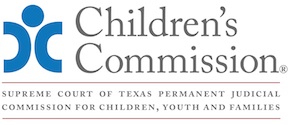2. Adversary Hearing
15 minutes; up to 25 suggested best practice
Prior to Hearing:
⧠ Hearing within 14 days of removal unless temporary order extended
⧠ Child’s GAL/AAL appointed
⧠ Parties served
⧠ CCEJ identified
At Hearing:
⧠ Identify parties present and served
⧠ Inform parents of right to attorney
⧠ Determine indigence
⧠ DFPS notice to relatives
⧠ Need for language interpretation
⧠ Child Placement Resources Form/efforts to identify/locate parties not present
⧠ CPS and criminal background checks conducted and home studies initiated
⧠ Indian/Native American Heritage
⧠ Family Visitation Plan
At the End of the Hearing:
⧠ Determine sufficient evidence to grant DFPS TMC of child; if not, return child
⧠ Document danger to child/remaining is home is contrary to welfare; reasonable efforts to prevent removal and to return child home;
⧠ If TMC to DFPS, inform parents that rights may be terminated or limited
⧠ If cite by pub needed, may render temporary order anyway
⧠ Determine aggravated circumstances alleged or exist
⧠ If family violence, protective order necessary or available
⧠ If child victim of human trafficking, placement in secure agency foster or group home
⧠ Place child with noncustodial parent or relative unless not in best interest
⧠ ISSUE COURT ORDER
• Service
• Notice of removal
• Parentage or DNA testing
• Dismissal date
• Transfer CCEJ, if applicable
Best Practices:
⧠ Engage parties with direct questions
⧠ AAL form provided if client not seen
⧠ Review services with parents
⧠ Set Status Hearing date
⧠ Open court notice
⧠ Ask the following questions:
• What is preventing this child from returning home today?
• How is my decision specific to this child and this family?
• Are there cultural issues we need to understand?
Well-being Issues at Adversary Hearing:
⧠ School stability, education goals, progress, and issues, and education decision-maker
⧠ Medical care and behavioral or psychiatric care
⧠ Young adult presence at hearing or opinion about education or medical care
